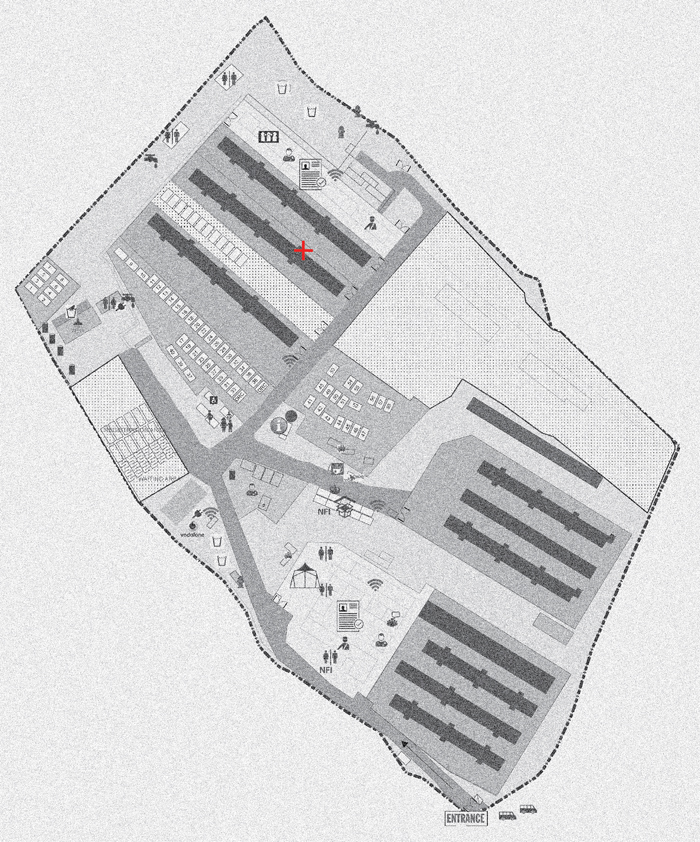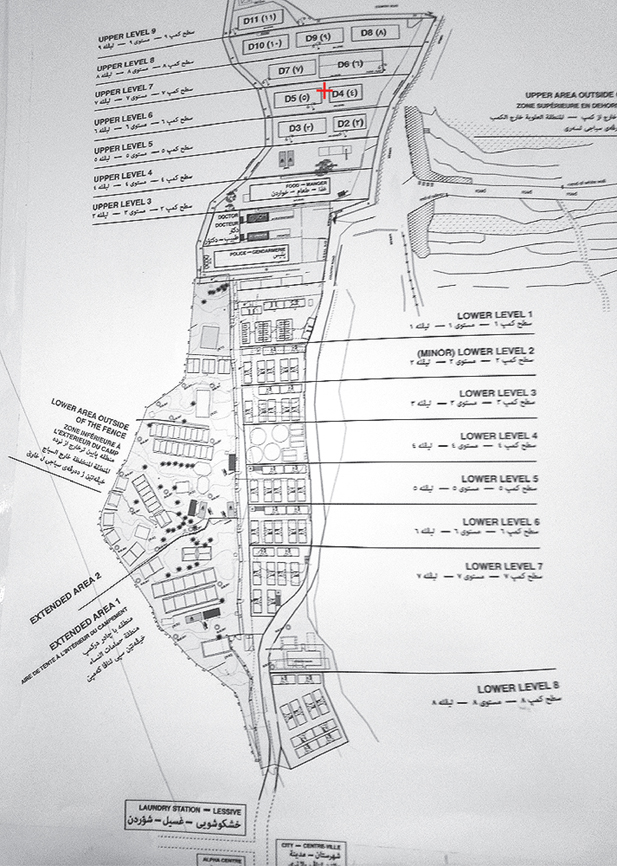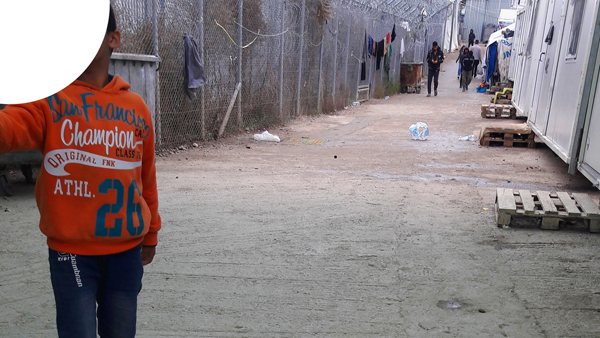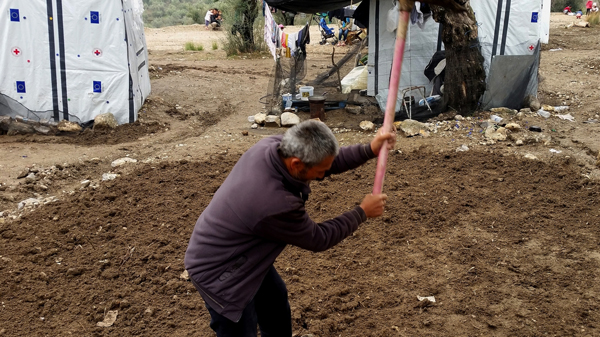Moria camp after the fire has been stripped bare by local Roma for whatever can be sold as scrap. But an empty Moria in its desolation reveals as much by its remains as a 'living Moria'.
![]()
2020: the Covid-19 pandemic meant the 24 hour enclosure of asylum seekers in intolerable conditions leading to a self destruction. The fire in September 2020 that destroyed Moria camp then serves to advance the hotspot project with new detention methods and facilities even more detached from civil life.
![]()
The hotspot is transformative in multiple ways. Not just within the designated space of the hotspot - that changes from a transit island to a prison island - but beyond it to alter the nature of the liberal society the hotspot was designed to protect.
 Lesbos RIC (Moria camp)
Lesbos RIC (Moria camp)
In theory an asylum seeker can move across the whole island, in practice this would be very difficult. A hotspot is a hybrid means of detention with a control regime of curfews, surveillance and unmarked checkpoints.
The possibility of intersectional relationships in its space outside of humanitarian work diminishes by the year.
A practice of intervention in order to construct a different psychogeography of sociality and mobility within the hotspot island requires artifice and silence.
 Samos RIC (Vathy camp)
Samos RIC (Vathy camp)
Every hotspot has a camp with a registration centre or RIC: Moria at Lesbos, Vathy at Samos. Moria meant for 3000 asylum seekers held at least 15000 living in conditions of severe overcrowding, poor sanitation, rife with the multiple forms of violence.
![]()
Critics of the hotspot see it as a breach of human rights law and of the Refugee convention:
1. the hotspot legitimises the detention/imprisonment of the asylum seeker
2. the hotspot legitimatises the concept of a 'third safe country'.
To quote from The New Humanitarian, “should the refugee stop somewhere next to their burning house, they can no longer be considered a refugee. No longer in immediate danger, they are considered to be in a “safe third country.”
![]()
Put simply, a hotspot is a way to prevent movement beyond the point of arrival for anyone landing on Europe's shores to seek asylum. The hotspot fixes the point at which asylum may be granted or denied.
Asylum refusal means return to previous point of departure.
Whatever the logic at work, in practice the hotspot becomes a human bottleneck that turns the conception of asylum rights on its head.
![]()

The hotspot as a concept came after the so-called European refugee crisis of 2015 when almost a million refugees fled the Syrian civil war. The Greek islands of Lesbos, Samos and Chios were designated 'hotspot islands' in 2016. Followed by Italian hotspots at Lampedusa, and towns in Sicily.



 How Europe Recast the Migrant Body
How Europe Recast the Migrant Body